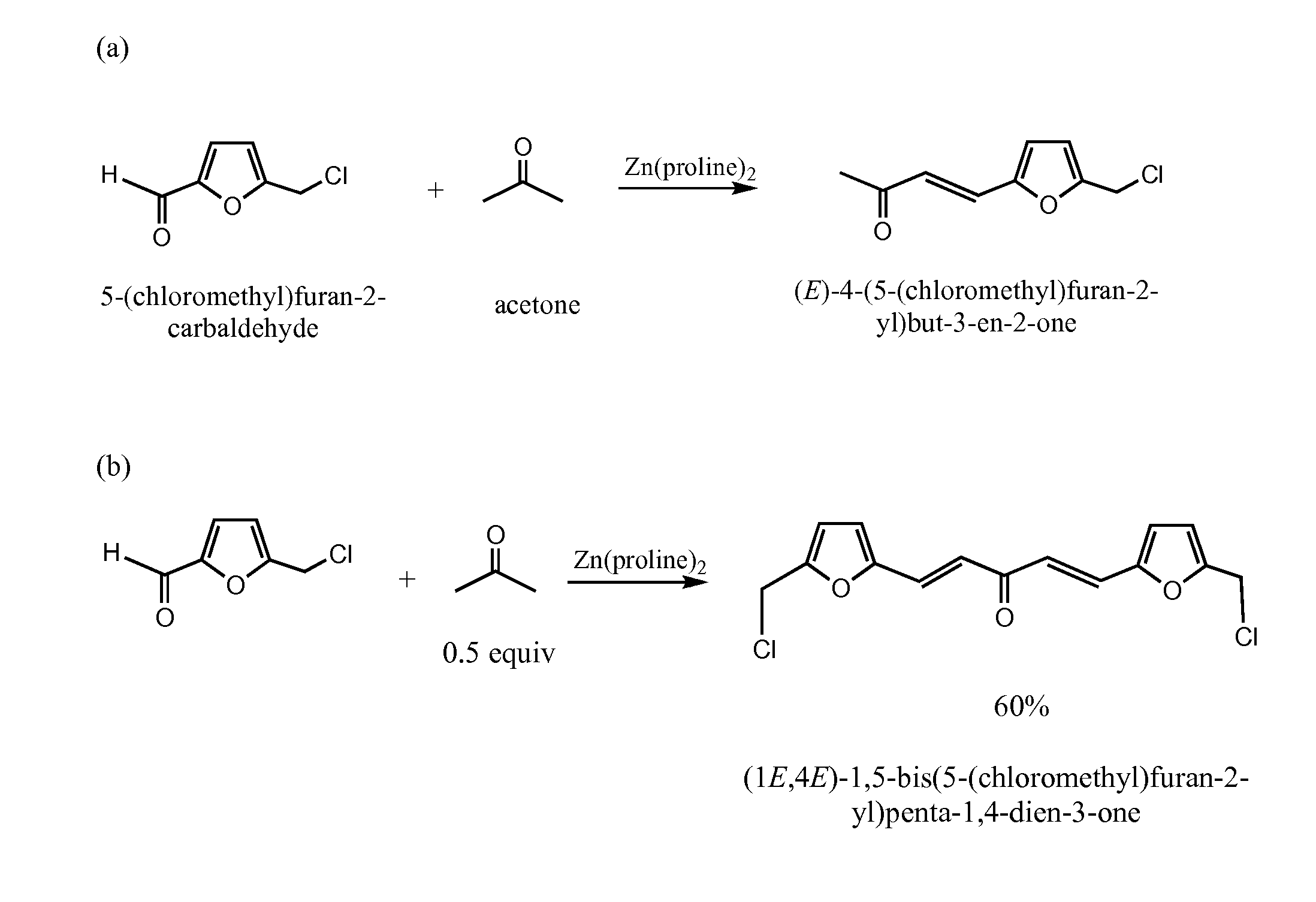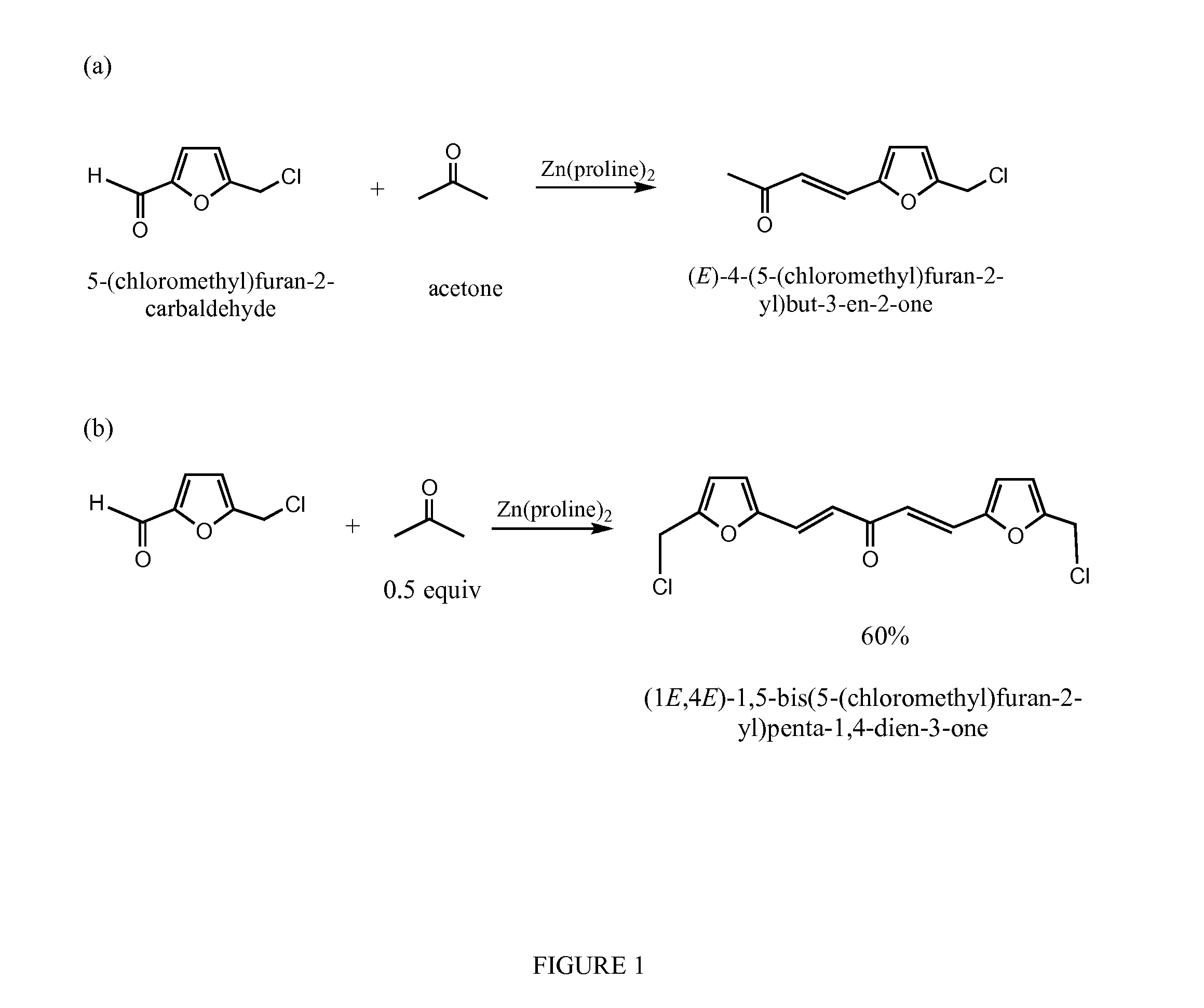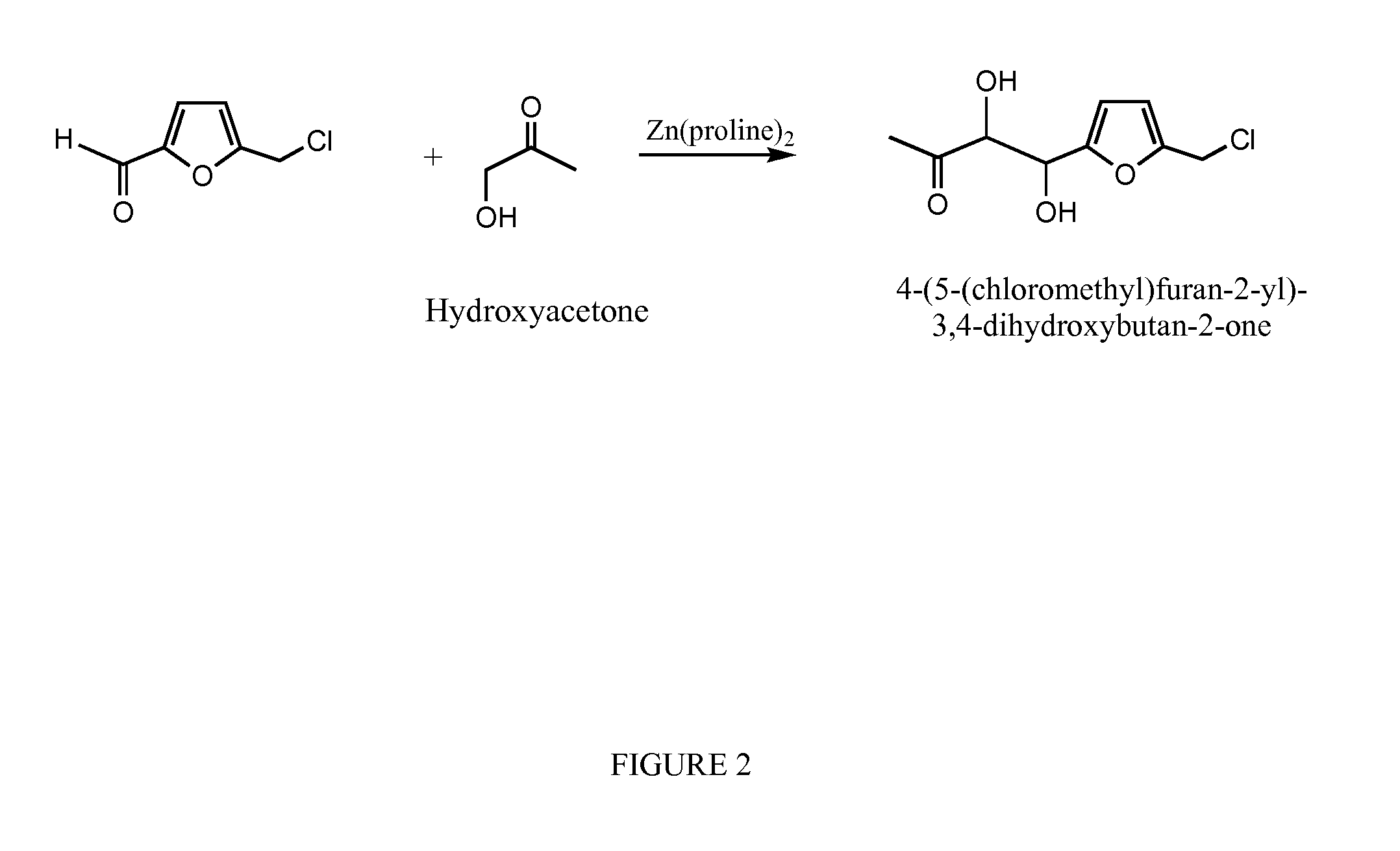Method Of Carbon Chain Extension Using Novel Aldol Reaction
a technology of aldol and carbon chain, which is applied in the field of carbon chain extension using novel aldol reaction, can solve the problems of poor selectivity, process less suitable for large-scale industrial use, and zinc-proline catalysts have shown only to successfully catalyze, and achieves high specificity and increase the length of carbon chains
- Summary
- Abstract
- Description
- Claims
- Application Information
AI Technical Summary
Benefits of technology
Problems solved by technology
Method used
Image
Examples
example 1
[0026]The reactions are performed in water without adjustment of pH. Piperidine was used in 5 mol %. Chloromethylfurfural (CMF) (0.631 g, 5.00 mmol) is charged in a small round bottom flask with a stirring bar, water (4.0 mL) is added. Acetone (0.290 g, 5.00 mmol (1 equivalent) or 0.25 mmol (0.5 equivalent) is then added (FIG. 1). The mixture is then stirred while piperidine was added at room temperature. The reaction mixture is kept closed with a plastic cap and stirred for 20 hrs. The stirring bar is removed and silica gel added. The mixture is dried with rotary evaporation. The residue is loaded on silica gel and eluted with 50% ethyl acetate in hexanes. Di-HMF adduct also is produced.
[0027]As would be understood by one of skill in the art, substitution of reagents as shown in FIGS. 1-4 under similar reaction conditions results in the products depicted in FIGS. 1-4.
example 2
[0028]In a 100 mL single-necked round bottom flask was placed HOBT (hydroxybenzotriazole) (1.95 g), L-Boc-proline (3.00 g), and 2-hydroxy-2-methyl-propyl-1-amine. To this was added 70 mL of anhydrous acetonitrile. This was stirred until homogenous and then chilled to 0° C. The EDC (1-ethyl-3-(3-dimethylaminopropyl)carbodiimide), (3.20 g) was added in one portion to this mixture. The mixture was allowed to warm to room temperature and stirred overnight. The solvent was removed in vacuo. The remaining material was then taken up in 60 mL of methylene chloride and subsequently washed 4× with 10 mL of 5% citric acid. The suspension was filtered and dried over sodium sulfate. Filtration and removal of the solvent gave rise to the crude material. Purification by silica gel chromatography using 10% methanol / methylene chloride as eluent afforded 3.0336 g of an amide having the structure (IV), tert-butyl 2-(2-hydroxy-2-methylpropylcarbamoyl)pyrrolidine-1-carboxylate. 1H NMR (CDCl3) d 4.29 (J=...
PUM
| Property | Measurement | Unit |
|---|---|---|
| temperatures | aaaaa | aaaaa |
| temperature | aaaaa | aaaaa |
| temperature | aaaaa | aaaaa |
Abstract
Description
Claims
Application Information
 Login to View More
Login to View More - R&D
- Intellectual Property
- Life Sciences
- Materials
- Tech Scout
- Unparalleled Data Quality
- Higher Quality Content
- 60% Fewer Hallucinations
Browse by: Latest US Patents, China's latest patents, Technical Efficacy Thesaurus, Application Domain, Technology Topic, Popular Technical Reports.
© 2025 PatSnap. All rights reserved.Legal|Privacy policy|Modern Slavery Act Transparency Statement|Sitemap|About US| Contact US: help@patsnap.com



